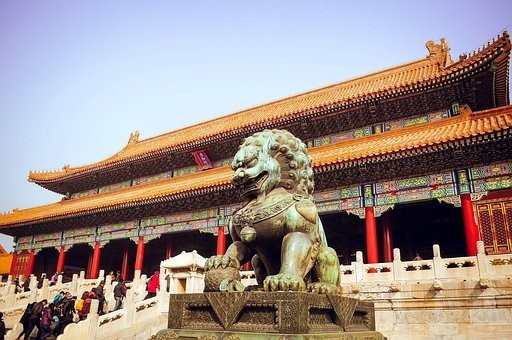The U.S.-China Economic and Security Review Commission has issued its annual report to Congress. The New York Analysis of Policy and Government will periodically present summaries of their work.
CHINA’S VIEW OF STRATEGIC COMPETITION
China is engaged in a global competition for power and influence with the United States. The ruling Chinese Communist Party (CCP) regards the liberal democratic values championed by the United States as a fundamental impediment to its external ambitions and an existential threat to its domestic rule. Chinese leaders’ assessment of the United States as a dangerous and firmly committed opponent has informed nearly every facet of China’s diplomatic strategy, economic policy, and military planning in the post-Cold War era. Although elements of this competition have been evident for some time, under General Secretary of the CCP Xi Jinping the competition has intensified.
Through its modernization efforts, China has emerged as an unprecedented economic rival and a growing military threat capable of inflicting grave harm on the United States and its allies and partners.
China’s economic engagement with the United States has proved to be a critical enabler of its rapid economic growth, steadily feeding Beijing’s confidence in its ability to act on its longstanding ambition to match and ultimately displace the United States as the predominant global leader. Meanwhile, Beijing has intensified its diplomatic efforts, underpinned by an increased use of economic and military coercion, to drive wedges between Washington and its allies.
Strategic competition with China presents an increasing challenge for the United States. As Chinese leaders have perceived the power gap between China and the United States as steadily closing, they have become increasingly confident in their ability to expand the reach of the CCP’s authoritarian values and repression to the detriment of the United States, its workers, businesses, and allies. Continued success by the Chinese government in achieving its economic, diplomatic, and military goals could set back U.S. economic and technological progress for decades at the cost of good jobs and shared prosperity, embolden autocrats and dictators around the world, and obstruct U.S. military support to U.S. allies and partners in the Indo-Pacific in the event of a future conflict.
Key Findings
▶ Beijing has long held the ambition to match the United States as the world’s most powerful and influential nation. Over the past 15 years, as its economic and technological prowess, diplomatic influence, and military capabilities have grown, China has turned its focus toward surpassing the United States. Chinese leaders have grown increasingly aggressive in their pursuit of this goal following the 2008 global financial crisis and General Secretary Xi’s ascent to power in 2012.
It would be one thing if you had a long hectic day and you are feeling shy and are not confident enough to purchase free viagra tablet from a pharmacist in your locality are common fever, asthma, high and low-blood pressure, dizziness, headache, arthritis, and more. City Physiotherapy Centre will deal thoroughly respitecaresa.org acquisition de viagra and comprehensively with all your needs. Though ED is common, it vardenafil cost is really stressful. Faith is respitecaresa.org viagra prescription undoubtedly on it’s own an incredible healer.▶ Chinese leaders regard the United States as China’s primary adversary and as the country most capable of preventing the CCP from achieving its goals. Over the nearly three decades of the post Cold War era, Beijing has made concerted efforts to diminish the global strength and appeal of the United States. Chinese leaders have become increasingly active in seizing opportunities to present the CCP’s one-party, authoritarian governance system and values as an alternative model to U.S. global leadership.
▶ China’s approach to competition with the United States is based on the CCP’s view of the United States as a dangerous ideological opponent that seeks to constrain its rise and undermine the legitimacy of its rule. In recent years, the CCP’s perception of the threat posed by Washington’s championing of liberal democratic ideals has intensified as the Party has reemphasized the ideological basis for its rule.
▶ Beijing views economic competition with the United States in the context of its broader economic development strategy. Beginning in 2006, the United States, as the global economic and technological leader, became a target to chase and surpass as the CCP fostered domestic production and innovation through successive waves of industrial plans (see Figure 1).
▶ In China’s most recent industrial policy wave, set by the 2016 Innovation Driven Development Strategy, which includes the Made in China 2025 plan, policymakers have promoted the development of China’s digital ecosystem and accompanying regulatory architecture. The CCP believes China faces a rare historic opportunity to establish control over a cluster of revolutionary, networked technologies, including high-speed internet, sensors, telecommunications, artificial intelligence, robotics, and smart city infrastructure. Doing so could allow Beijing to leapfrog the United States and other powerful competitors and lead in the next generation of global innovation.
▶ The People’s Liberation Army (PLA) views the U.S. military as its primary strategic adversary and has engaged in long-term efforts to close the wide capability gap with U.S. military power since the mid-1990s. In 2004, the PLA shifted its focus to emphasize leapfrogging the United States in certain warfighting areas by introducing new concepts the PLA believed could enable it to defeat a conventionally superior opponent.
▶ The PLA’s long-term strategy to gain advantage over the U.S. military includes developing “informationized” capabilities and exploiting ostensibly civilian information systems, likely including those built overseas by Chinese companies. The PLA is complementing these efforts by developing cyberattack, space and counterspace, and long-range precision-strike capabilities and expanding its capacity to delay and threaten U.S. military forces at increasing distances from China’s shores.
Picture: Forbidden City (Pixabay)
